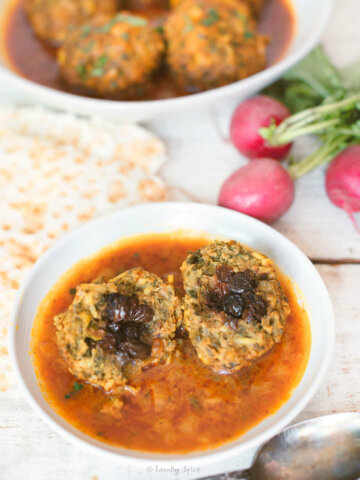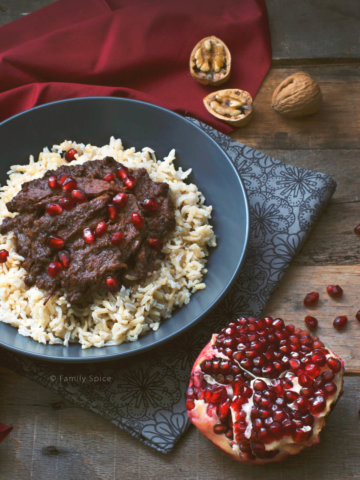Fresh herbs are always used in Persian cooking, especially in this Persian Salmon Stew with Cilantro and Tamarind, known as Ghalieh Mahi.
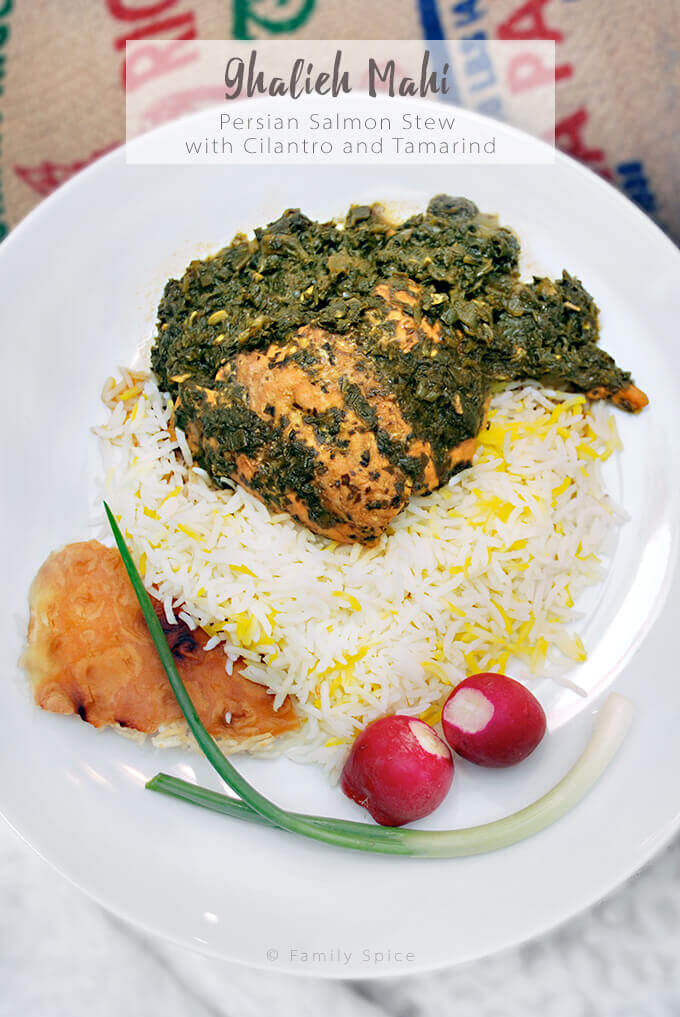
You are probably seeing a lot of green on the world-wide-web this time of year. And frankly, it’s not just for St. Patrick’s Day where everyone is Irish once a year. There is actually another holiday that was green before St. Patty’s Day: It’s the Persian New Year, or Noruz, the first day of Spring. This year it lands on March 20th.
I have already given you all a history lesson of this beautiful celebration (you can read about noruz here) that dates back thousands of years. No, this post is something different.
To celebrate the rebirth of nature, the beginning of spring, Persians love to cook with anything green. And this typically means fresh herbs.
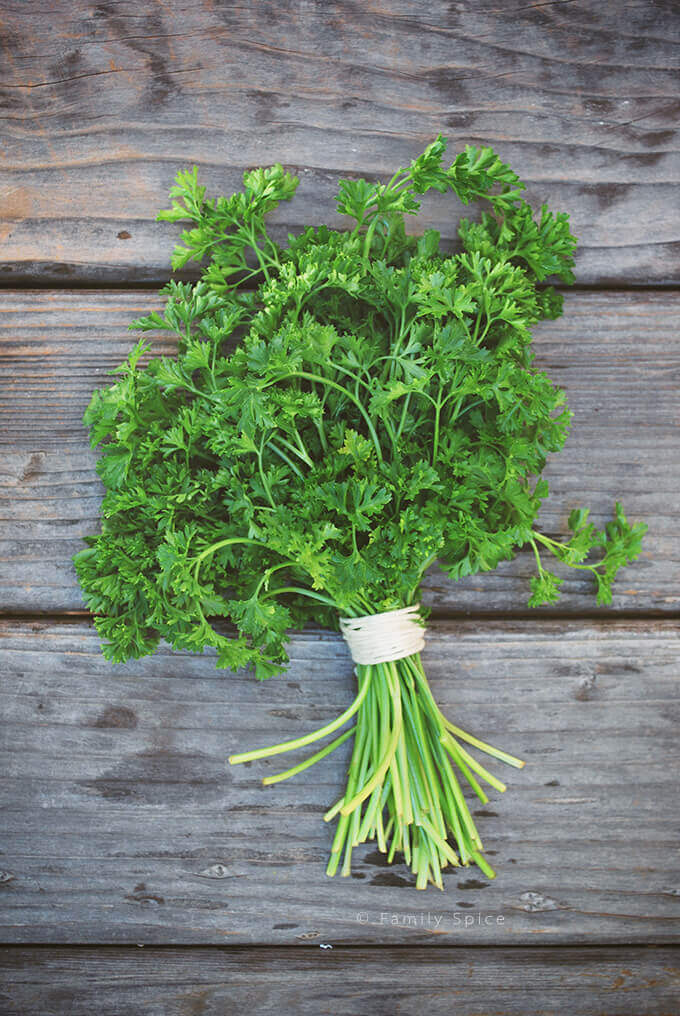
About herbs in Persian cuisine
Persian cuisine is not heavily spiced or spicy, but it is incredibly flavorful and delicious. And herbs play a staring role in many Persian dishes. In fact, one Persian dish could have as many as 5 different herbs in it.
You would think with all of this flavor they would be competing with each other, but they do not. They actually compliment each other very well.
The traditional Persian meal for Noruz is Sabzi Pollo ba Mahi, basmati rice with herbs and rish. When I make Sabzi Pollo, I like to use dill, parsley, cilantro, green onions and spinach (not an herb, but it’s green and adds some nutritional punch).
Another traditional meal served to celebrate the new year is Kookoo Sabzi, an herb frittata. This crustless egg quiche uses the same greens as Sabzi Pollo, but also includes fenugreek and saffron.
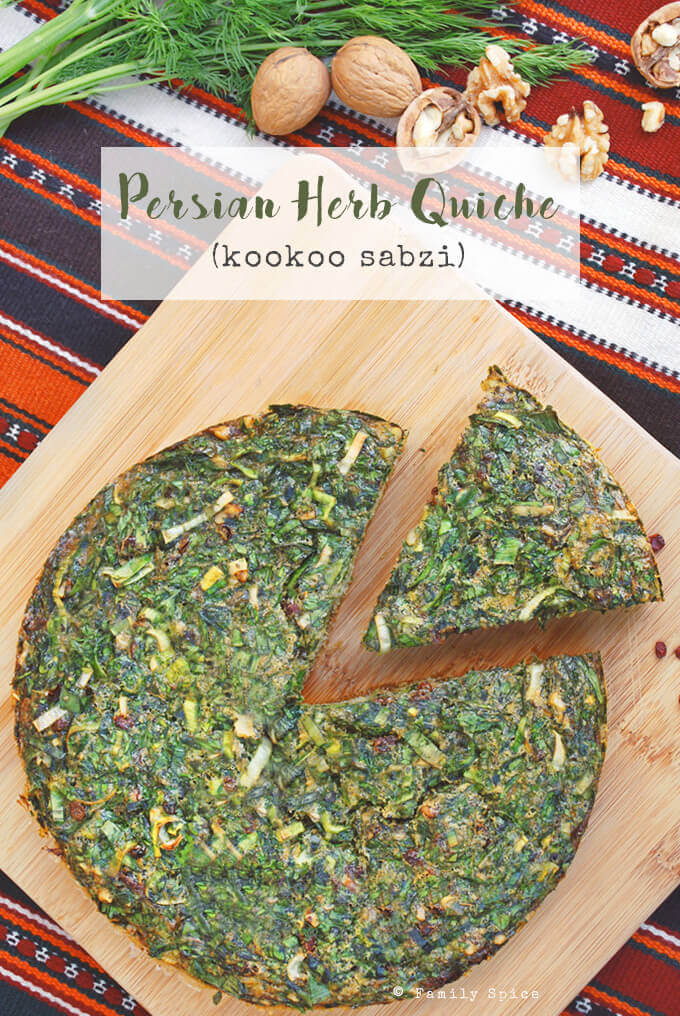
About Ghalieh Mahi
One spring I was visiting family in Northern California and enjoying some great food prepared by the very talented cooks in my family. One of my cousins served a new “green” dish that my husband and I had not had before. It was this Persian Salmon Stew with Cilantro and Tamarind (Ghalieh Mahi).
Although not a traditional for the Persian New Year, this is another herb-packed stew. Similar to Ghormeh Sabzi, an herb stew made with lamb or beef, but with different proportions.
Ghalieh Mahi originates from northern Iran, the Caspian Sea region where fresh fish (and caviar!) is abundant. Many dishes from this region use a lot of garlic and are sour.
Apparently, you do not smell the garlic as much in this humid area and the sourness does not affect one’s constitution as harshly, either.
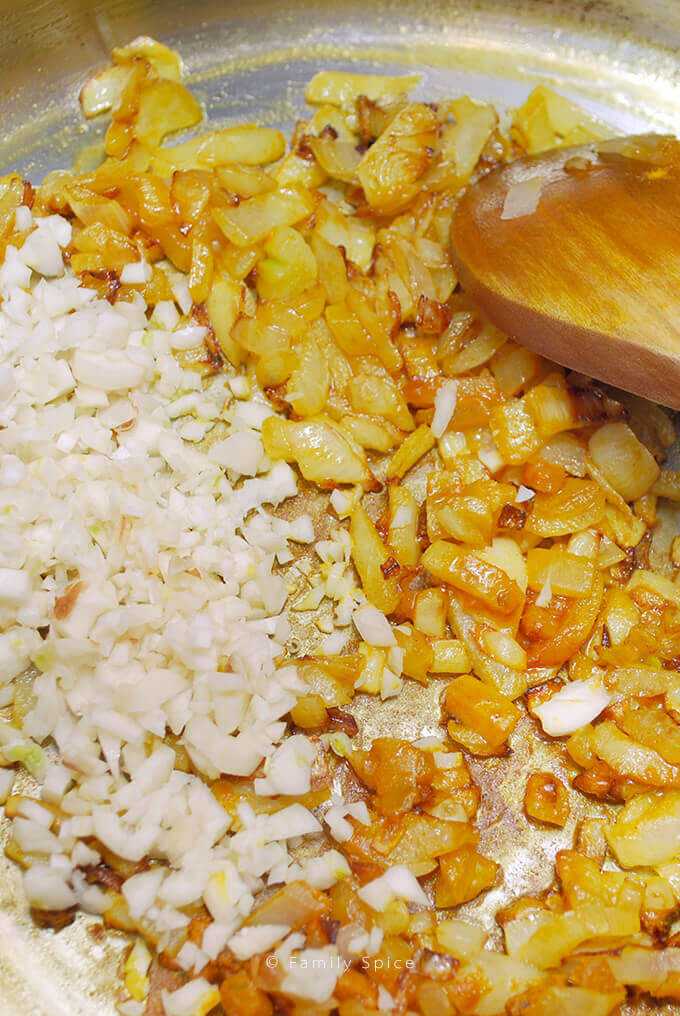
How to prepare Ghalieh Mahi
Ghalieh Mahi is made primarily with cilantro, but parsley, green onions and fenugreek are also used. But first, onions are sautéed with turmeric. This is a slow process, so don’t rush it. I used about 4 large cloves of garlic, but you can easily add or subtract the amount of garlic you want to taste.
The herbs in this dish, as with other Persian recipes, require to be finely chopped. This is where the food processor comes in very handy. Of course, you can chop the herbs by hand with a knife if you do not have a food processor. It takes a little more work, but it is very doable.
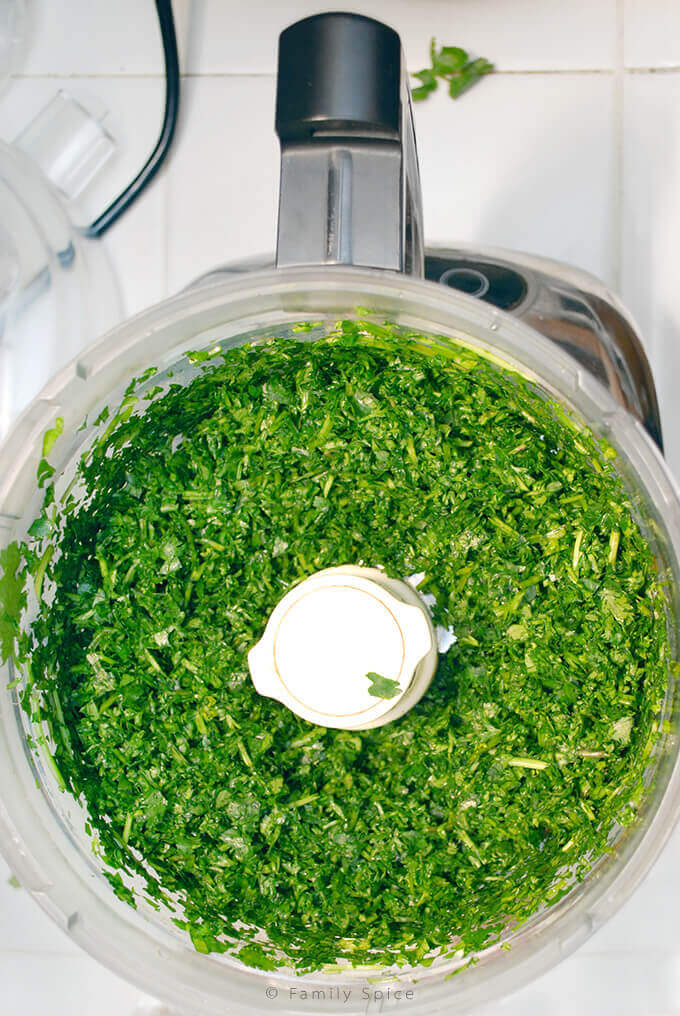
Persian stews are typically “soured” with the use of lemon juice or dried limes. We even use sour grapes, gooreh, to add some tartness to dishes. Ghalieh Mahi uses tamarind paste. It is very unique, but adds a wonderful sour dimension to this dish.
I used a combination of both tamarind and lemon juice, per my lemon-loving-husband’s request, and it turned out amazing. A little tomato paste gives the stew a bit of body and you let this stew simmer so the flavors can meld together.
The salmon filets are added right at the end of cooking process. You just immerse them into the stew and once cooked through, about 15 minutes, the stew is ready to serve.

Can Ghalieh Mahi be made days before serving?
Like most Persian stews, ghalieh mahi can be made days ahead, and it is actually preferred this way so the flavors can really blend together even more. Just prepare the vegetables part of the stew ahead of time, and store in the refrigerator or freezer until ready to serve
Since you add the salmon to the stew 15-20 minutes prior to serving, this keeps the fish fluffy and not over cooked. Just reheat the stew when you are ready to serve it and add the salmon.

How to serve Ghalieh Mahi
Persian stews are so incredibly delicious and worth all the work involved in preparing them. Traditionally, all Persian stews, including galieh mahi, are served on a bed of fluffy basmati rice. You can also serve it without rice, with some lavash or even on a bed of brown basmati rice.
And no matter what holiday you choose to celebrate this March, make it a green one!
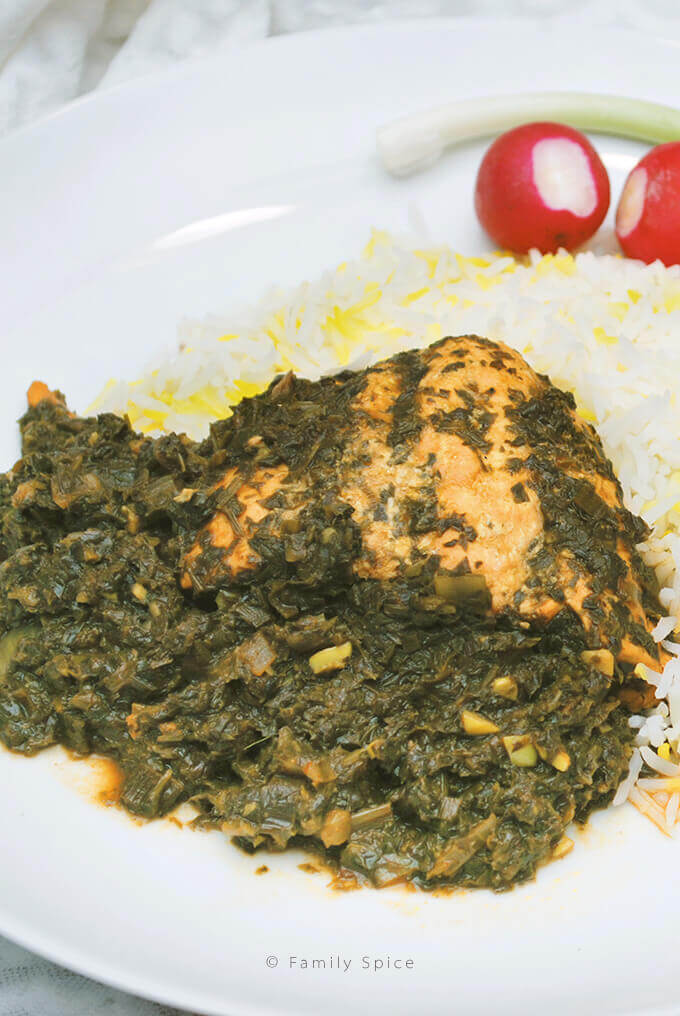
Want to learn more about Norouz and the Persian New Year? I have put together an ebook that has all the history, traditions and recipes of Norouz, in a beautifully photographed ebook. And it’s only $1.99! Learn more here!
Persian Salmon Stew with Cilantro and Tamarind (Ghalieh Mahi)
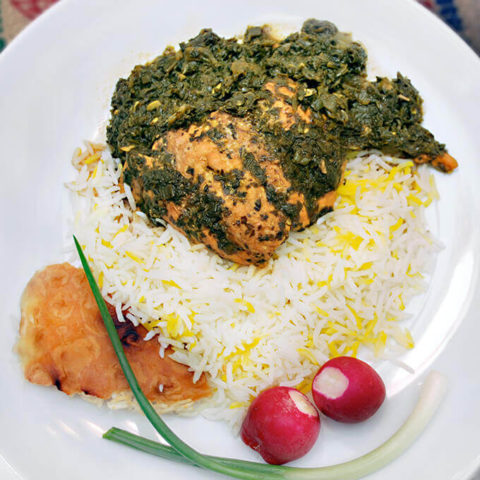
Fresh herbs are always used in Persian cooking, especially in this Persian Salmon Stew with Cilantro and Tamarind, known as Ghalieh Mahi.
Ingredients
- 9 oz fresh cilantro
- 3 oz fresh parsley
- 2 TBS extra virgin olive oil
- ½ medium onion, diced
- 1 teaspoon turmeric
- 4 large garlic cloves, minced
- 2 TBS dried fenugreek
- ½ teaspoon salt
- ¼ teaspoon ground black pepper
- 2 cup water
- 2 TBS lemon juice
- 2 TBS tamarind paste
- 1 TBS tomato paste
- 1 lb boneless salmon, cut into 4 equal pieces
Instructions
- Wash and spin dry cilantro and parley. Time off stems, especially the big woody ones, and discard.
- Once herbs are dry, purée In a food processor until finely chopped.
- In large pot over medium-high heat add olive oil.
- When oil is hot, add onions and sauté until onions start to soften and reduce heat to medium-low.
- Continue cooking for 15-20 minutes until vegetables are translucent, then stir in turmeric and garlic.
- Cook garlic for 5 minutes then stir in chopped herbs, dried fenugreek, salt and pepper.
- Cook for an additional 10 minutes then add water, lemon juice, tamarind paste and tomato paste.
- Cover pot, bring to boil, then reduce heat to low and cook for 2 hours.
- At this point, the stew can be stored in a refrigerator until needed. The longer it sits, the more flavor the mixture will have.
- About 20 minutes prior to serving, submerge salmon into the hot stew.
- Cover pot and heat over medium-low heat until fish is done, about 15-20 minutes.
Notes
Serving Suggestions: Serve with basmati rice.
Cooking Tips: This dish is typically spicy. If you like, add ¼-1/2 teaspoon of cayenne pepper.
Nutrition Information:
Yield:
4Serving Size:
1 salmon filetAmount Per Serving: Calories: 372Total Fat: 22gSaturated Fat: 4gTrans Fat: 0gUnsaturated Fat: 16gCholesterol: 71mgSodium: 416mgCarbohydrates: 16gFiber: 5gSugar: 6gProtein: 29g
PS If you try this recipe, why not leave a star rating in the recipe card right below and/or a review in the comment section further down the page? I always appreciate your feedback.
You can also follow me on Pinterest, Facebook or Instagram. Sign up for my eMail list, too!


